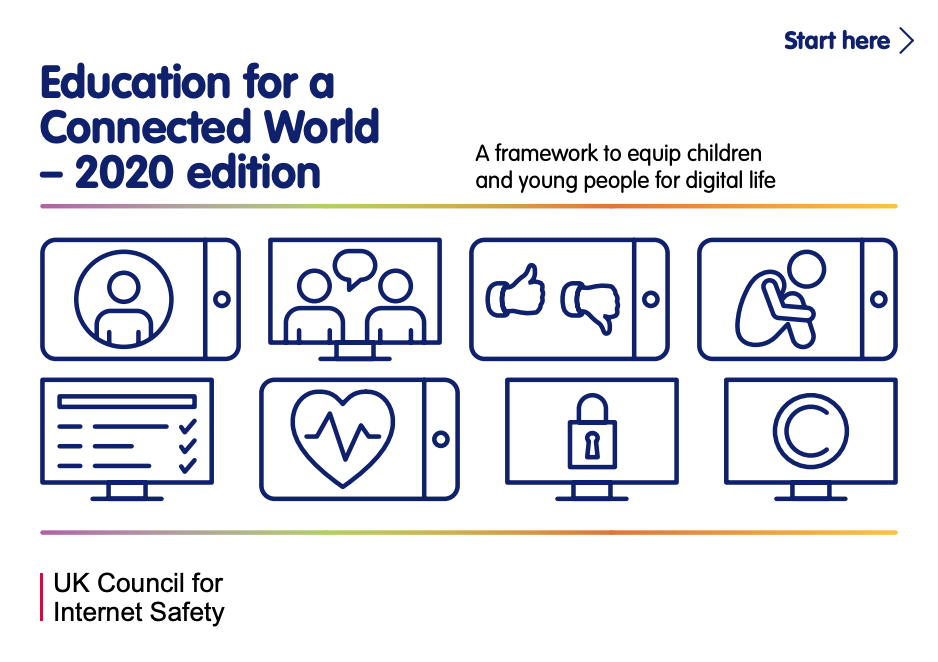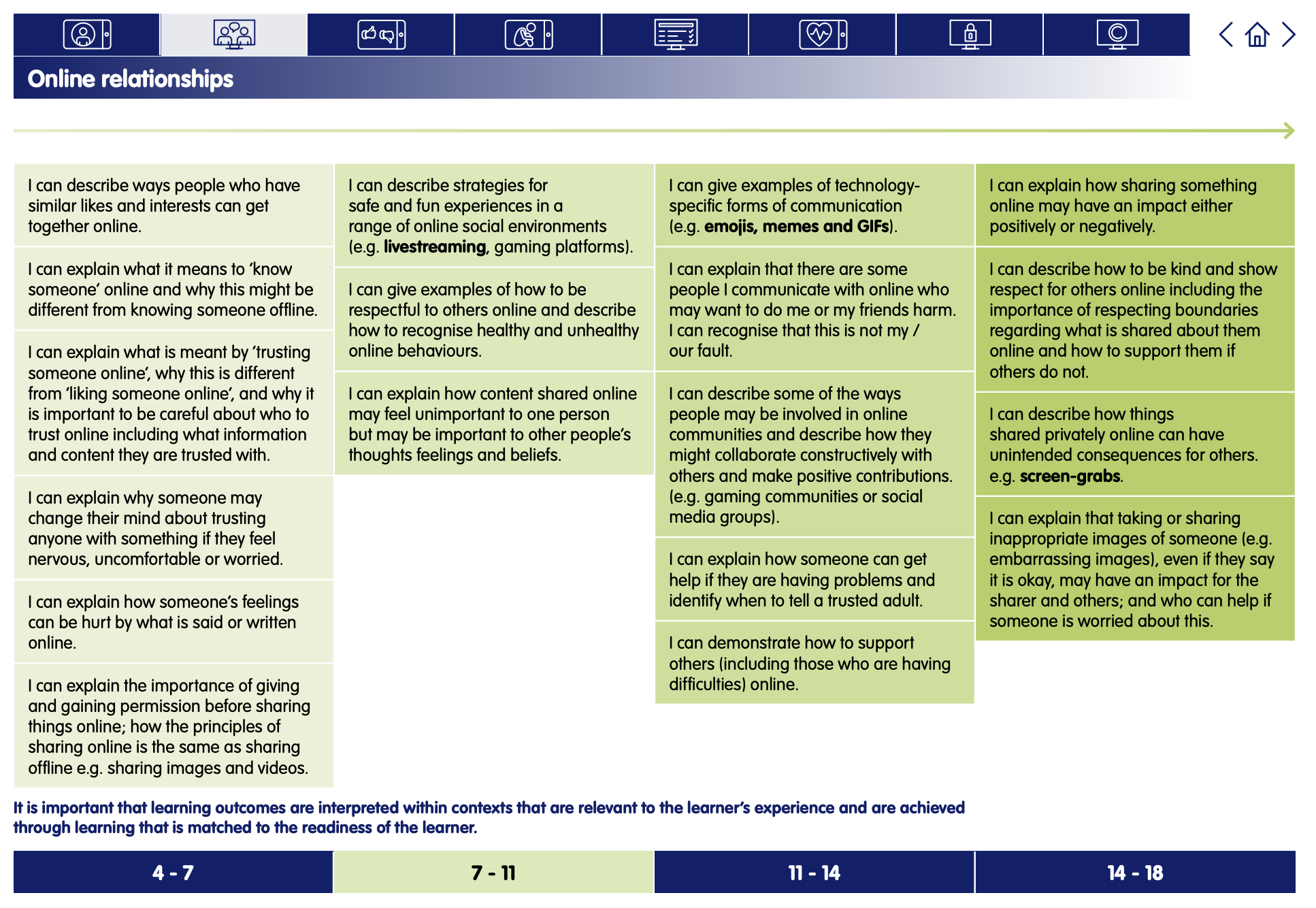Your Rings of Responsibility
Digital Literacy and Online Safety (Y4) - Lesson 1
A note about this lesson

This lesson is taken from Common Sense Education’s excellent Digital Citizenship curriculum. Their resources are shared for free under A Creative Commons Attribution- NonCommercial- NoDerivatives 4.0 International License.
You can find the original resources HERE.
Objectives
- Examine both in-person and online responsibilities.
- Describe the Rings of Responsibility as a way to think about how our behavior affects ourselves and others.
- Identify examples of online responsibilities to others.
Lesson Resources
- Bowl of water and a coin · Masking tape (for marking rings on your classroom floor) · Crayons, coloured pencils, or markers
- Your Rings of Responsibility - Lesson Slides
- Your Rings of Responsibility - My Rings of Responsibility Student Handout
- Your Rings of Responsibility - My Rings of Responsibility Student Handout (TEACHER VERSION)
Lesson 1 - Your Rings of Responsibility
Lesson 2 - Password Power-Up
Lesson 3 - This Is Me
Lesson 4 - Our Digital Citizenship Pledge
Lesson 5 - The Power of Words
Lesson 6 - Is Seeing Believing?
Links to Education for a Connected World.
This lesson from Common Sense Media's Digital Citizenship curriculum links to the following strands from the Online relationships section of the Education for a Connected World framework.
Introduction - Rings Metaphor
Teaching digital citizenship is all about helping kids think beyond themselves and recognise the ripple effects of their actions. Personal responsibility is important, but understanding their responsibilities to others can help kids unlock new ways to learn and connect with their communities -- and even change those communities for the better.
Before the lesson: Use masking tape to create a large, physical version of the Rings of Responsibility on your classroom floor. Alternatively, you can create the rings with chalk on an outdoor blacktop.
Invite your students to gather around you. Drop a pebble or a penny into a bowl of water and watch the concentric circles grow.
Ask: What do these circles remind you of?
Students may respond with: a bull's eye target, rings in a tree stump, etc. Explain that the circles remind you of the Rings of Responsibility. Clarify that a responsibility is a duty you have to yourself or others. (Slide 4)
The Rings of Responsibility
Show the Rings of Responsibility video on Slide 5 and ask: According to the video, how could throwing a bottle out of your window be similar to something you do online? Take turns sharing with your partner.
Invite students to respond. Clarify that littering is similar to doing something online because they both show how your actions affect not only you, but also your community and your world.
Ask: According to the video, what are the Rings of Responsibility?
Invite students to respond. Clarify that each ring represents a person or group you are responsible to (yourself, your community, and your world) and that being responsible to someone means that you think about how your actions will impact them.
Show students the Rings of Responsibility framework on Slide 6 and explain what each ring represents:
- Self: The center ring represents responsibilities you have to yourself, such as keeping yourself safe and healthy.
- Community: The middle ring stands for responsibilities you have to your community, including the people you know and interact with on a regular basis. This can include both friends and family. But it can also include people you don't know well, but with whom you interact with (e.g., grocery store clerks, a friend in an online gaming community, etc.).
- World: The outer ring stands for your responsibilities to the larger world. This would include people you don't know but whom your actions might affect.
(If necessary, define the vocabulary term community.)
Pair students up and assign each to be "A," "B," or "C." Have each pair answer one of the questions on Slide 6, according to their letter.
Call on pairs to share their answers. Example answers include:
- Self: I eat healthy food, I keep my bedroom clean, I don't watch too much TV before bed.
- Community: I help my neighbours with yard work, I follow rules like using the crosswalk.
- World: I don't litter, I don't say mean things to others online.
Our Responsibilities
Ask: Have you ever heard the term "digital citizen"? What comes to mind when you hear that term?
Invite students to share any words or ideas that come to mind. Clarify that a digital citizen is someone who uses technology responsibly to learn, create, and participate. Say: As digital citizens, we have responsibilities to ourselves, our communities, and our world as we learn, create, and participate on the internet. (Slide 7)
Direct students to stand outside the physical Rings of Responsibility you've marked in your classroom. If space is an issue, you can also designate corners or areas of your room to represent the three rings.
Say: As I read each statement, move silently to stand inside the ring you think best fits with that statement. For example, if I said "I never tell anyone my full name online," you would walk to the centre ring -- Self -- because that's a way that you can protect your own privacy.
Read the following statements aloud, pausing after each one so students have time to move around. If you have time, discuss and reflect when students have different answers. Some examples may fit into multiple rings.
- I only use apps and websites that are OK for someone my age. (Self)
- I never share things about my friends that they wouldn't want other people to know. (Community)
- I don't post or share information online if I'm not sure that it's true. (World)
- I treat others with respect, in person or online. (Community or World)
Plenary - My Rings of Responsibility
Have students return to their seats, and distribute the My Rings of Responsibility student handout. Read the directions aloud and pass out crayons, coloured pencils, or markers. (Slide 8)
Allow five to seven minutes for students to complete the handout.
Invite students to share their answers. (See the Teacher Version for reference.)
Invite students to select one statement from the handout and write an explanation for which ring(s) it belongs in and why. They can write this either on the back of the handout or by adding a second page to the document. Collect handouts to assess student learning. (Slide 9)
Have students complete the Lesson Quiz. Send home the Family Activity and Family Tips.


